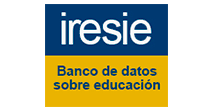TRAMAS DE ARTESÃS - QUE PENSAM ESSAS MÃOS?
DOI:
https://doi.org/10.5216/ia.v40i3.36294Keywords:
Formação. Corpo. Pensamento. Artesanato.Abstract
Este artigo tem como objetivo refletir acerca do processo de educação de mulheres, tomando o corpo da artesã como categoria central circunscrita às relações com a natureza e entre o pensamento e o trabalho das mãos. Os aspectos conceituais da pesquisa apoiam-se em contribuições de Theodor Adorno, Max Horkheimer, Herbert Marcuse e Sigmund Freud. Como modelo exemplar da dimensão formativa do corpo da mulher no contexto do trabalho manual, retoma-se dados empíricos produzidos em pesquisa realizada sobre o ofício artesanal. A ligação entre corpo e pensamento distraídos da vida, que resulta no processo de reificação, atualiza a relação de amor-ódio pelo primeiro, quando a naturalização do tempo de trabalho contém a promessa de uma nova função da mulher na esfera doméstica.
Downloads
Downloads
Published
How to Cite
Issue
Section
License
Inter-Ação uses the Creative Commons Attribution 4.0 License for Open Access Journals (Open Archives Initiative - OAI) as the basis for the transfer of rights. Open access means making documents available on the Internet free of charge, so that users can read, download, copy, distribute, print, search, or link to the full text of documents, process them for indexing, use them as input data for software programs, or use them for any other lawful purpose, without financial, legal, or technical barriers.
Authors publishing in this journal agree to the following conditions:
1) Authors retain copyright and grant the journal the right of first publication, with the work simultaneously licensed under the Creative Commons Attribution License, which permits redistribution of the work with attribution and first publication in this journal.
2) Authors are permitted to enter into additional, separate agreements for non-exclusive distribution of the version of the work published in this journal (e.g., for publication in an institutional repository or as a book chapter), with attribution and first publication in this journal.
3) Authors are permitted and encouraged to publish and distribute their work online (e.g. in institutional repositories or on their home page) at any time before or during the editorial process, as this may generate productive changes as well as increase the impact and citation of the published work.
















